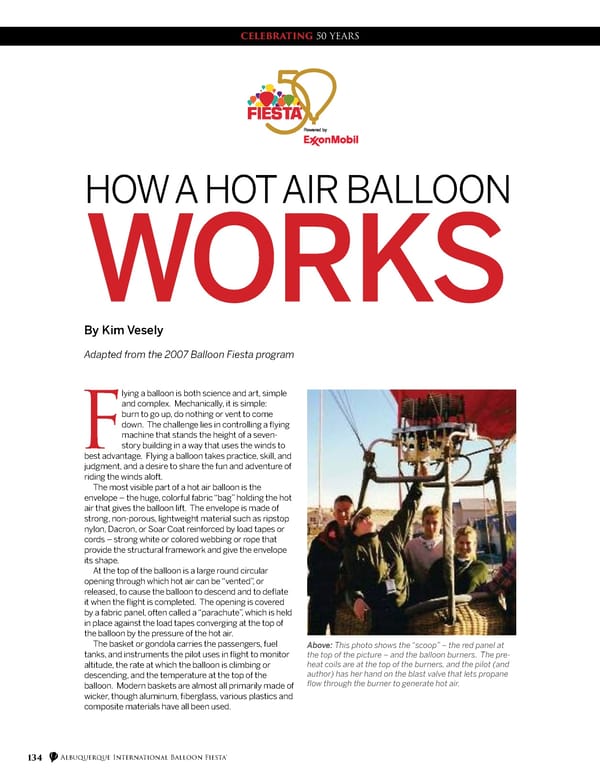CELEBRATING 50 YEARS HOW A HOT AIR BALLOON WORKS By Kim Vesely Adapted from the 2007 Balloon Fiesta program lying a balloon is both science and art, simple and complex. Mechanically, it is simple: burn to go up, do nothing or vent to come down. The challenge lies in controlling a flying machine that stands the height of a seven- story building in a way that uses the winds to F best advantage. Flying a balloon takes practice, skill, and judgment, and a desire to share the fun and adventure of riding the winds aloft. The most visible part of a hot air balloon is the envelope – the huge, colorful fabric “bag” holding the hot air that gives the balloon lift. The envelope is made of strong, non-porous, lightweight material such as ripstop nylon, Dacron, or Soar Coat reinforced by load tapes or cords – strong white or colored webbing or rope that provide the structural framework and give the envelope its shape. At the top of the balloon is a large round circular opening through which hot air can be “vented”, or released, to cause the balloon to descend and to deflate it when the flight is completed. The opening is covered by a fabric panel, often called a “parachute”, which is held in place against the load tapes converging at the top of the balloon by the pressure of the hot air. The basket or gondola carries the passengers, fuel Above: This photo shows the “scoop” – the red panel at tanks, and instruments the pilot uses in flight to monitor the top of the picture – and the balloon burners. The pre- altitude, the rate at which the balloon is climbing or heat coils are at the top of the burners, and the pilot (and descending, and the temperature at the top of the author) has her hand on the blast valve that lets propane balloon. Modern baskets are almost all primarily made of flow through the burner to generate hot air. wicker, though aluminum, fiberglass, various plastics and composite materials have all been used. ® 134 Albuquerque International Balloon Fiesta
 2022 Balloon Fiesta Program Page 139 Page 141
2022 Balloon Fiesta Program Page 139 Page 141